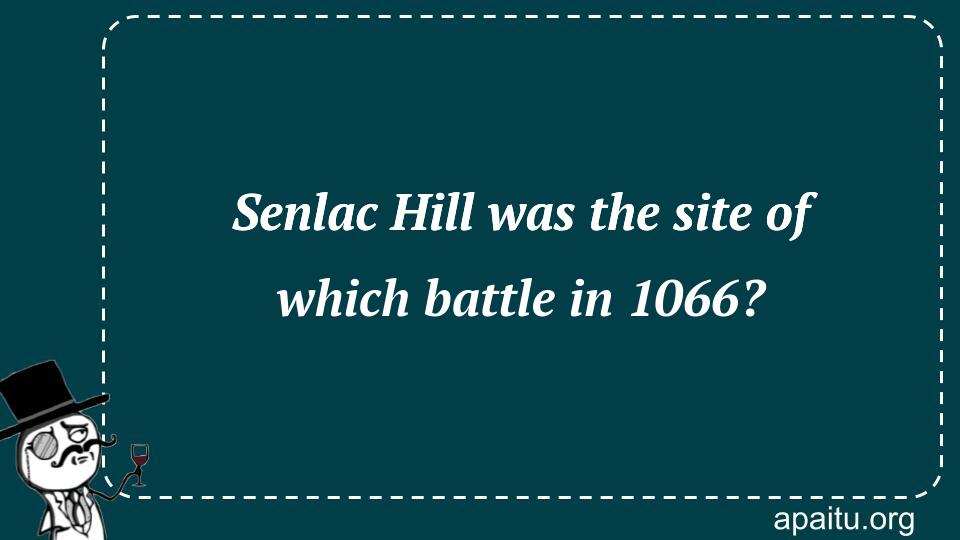Question
Here is the question : SENLAC HILL WAS THE SITE OF WHICH BATTLE IN 1066?
Option
Here is the option for the question :
- Battle of Flodden
- Battle of Edgehill
- Battle of Hastings
- Battle of Agincourt
The Answer:
And, the answer for the the question is :
Explanation:
At the Battle of Hastings, the newly crowned King Harold Godwineson of England faced out against the invading Duke William of Normandy in a conflict that was fought for the English throne. During the skirmish, King Harold was killed when he was struck by a stray arrow from the Normans. After receiving a subsequent command from Pope Alexander II to perform penance for his invasion, William commissioned the construction of an abbey on the site, which is still there to this day.

The Battle of Hastings, fought on October 14, 1066, was one of the most significant battles in English history. It was fought between the Norman-French army of William, Duke of Normandy, and the English army of King Harold II, and it took place on Senlac Hill, near the town of Hastings in southern England.
The battle was the culmination of a power struggle that had been brewing in England for many years. In 1066, the English king, Edward the Confessor, died without an heir, and a succession crisis ensued. Harold II was crowned king, but his claim to the throne was challenged by William, Duke of Normandy, who argued that he had been promised the crown by Edward before his death.
William assembled an army of Normans, including cavalry and archers, and sailed across the English Channel to challenge Harold’s claim to the throne. Harold gathered his army, which was composed mainly of foot soldiers armed with spears and shields, and marched south to meet the Norman-French forces.
The Battle of Hastings was a brutal and hard-fought affair, with both sides suffering heavy losses. The English army fought valiantly, but they were ultimately undone by the superior tactics and weaponry of the Norman-French army. The Normans used their cavalry to great effect, charging into the English lines and disrupting their defensive formations. The Norman archers also played a key role, raining arrows down on the English soldiers and causing chaos and confusion.
In the end, King Harold was killed, and his army was defeated. William, Duke of Normandy, emerged victorious and was crowned King of England on Christmas Day, 1066. The Battle of Hastings marked the beginning of a new era in English history, as the Norman-French conquest of England led to significant changes in the country’s political, social, and cultural landscape.
the site of the Battle of Hastings is marked by a memorial on Senlac Hill, which serves as a reminder of the courage and sacrifice of the English soldiers who fought and died on that fateful day. The battle remains an important part of English history and has been immortalized in countless works of literature, art, and popular culture.
the Battle of Hastings was a pivotal moment in English history, marking the end of the Anglo-Saxon era and the beginning of the Norman-French period. The battle was fought on Senlac Hill near Hastings in southern England, and it was a brutal and hard-fought affair that saw the Norman-French army emerge victorious. The battle continues to be remembered and commemorated as a defining moment in English history.